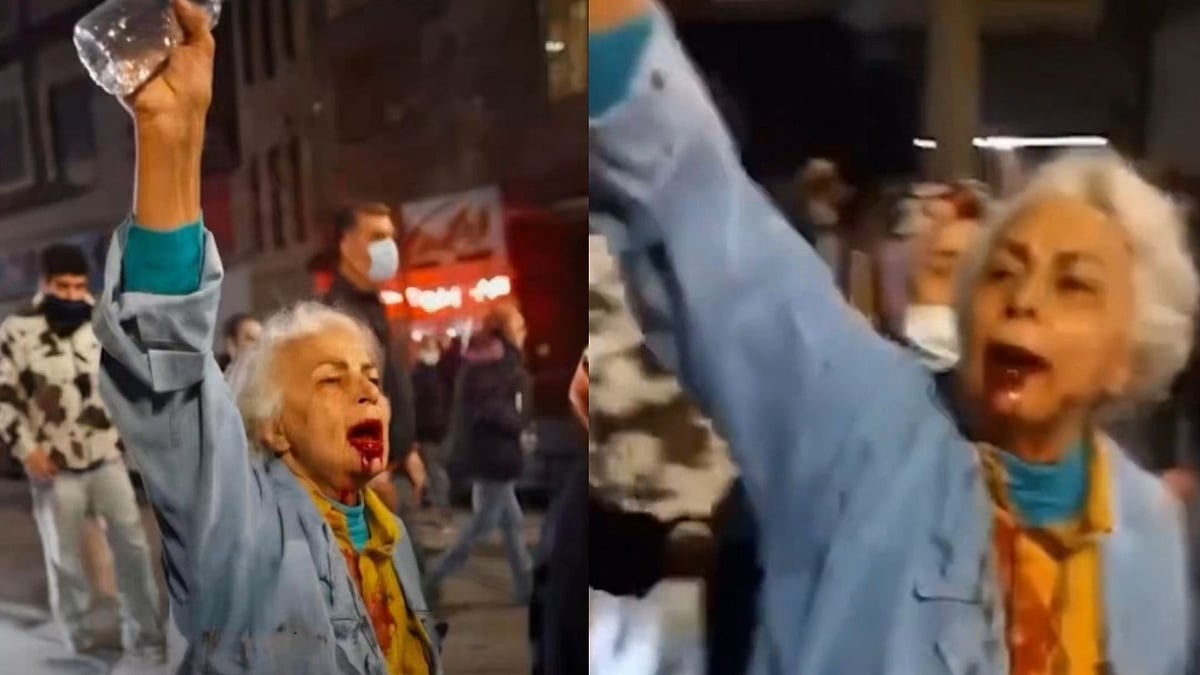Sanjay Bhattacharya has been known for his iconic realistic paintings for almost four decades. He has deviated from his original style to create huge canvases of pure geometrical abstractions.
Was it a conscious decision to deflect from realism to abstraction? “No… not really. It just happened,” says Sanjay Bhattacharya. “I could see my slow drift when I first did my series Tribute to the Masters and Krishna. You can see them as a part of these series. Shapes just came naturally to me.”
However, in the earlier series, they were just a part of the realistic representations of Rembrandt, Dali or our very own Krishna. “This time actually, they are dominating my canvas. They have become the highlight. Never thought I would do geometric abstraction. Never consciously… but today they define my work,” admits Sanjay.
“When you are standing in front of a canvas and you can visualise the division of space. Always something new comes up. That’s the beauty of this form of art,” he shares. “For realistic paintings, you have to depend on shape and colour of whatever you are painting. For example, if I am painting Qutub Minar, only when I manage to replicate everything, it will look like a Qutub Minar. Here it is different. Here the canvas shows you the different shades. Suppose I start with a triangle, then the negative space starts showing you where the circle should go…that’s the fun of it. There’s no reference. Just a lot of freedom,” Sanjay reveals.

Sanjay believes that while doing abstraction, the canvas talks to you. It tells you if something is going wrong. It’s the division of space that matters while constructing a geometrical abstraction. “If divisions are wrong, then whatever you do you can’t have a good result.”
One can see that there’s a lot of darkness and depth in Sanjay’s abstracts. He goes on to explain the importance of space and colours vividly. “A blank canvas is totally a negative space. If I put black dot on it, it becomes a positive space. That way nobody is guiding you. Only canvas guides you… and your mind who approves it.”
Talking about the dark colours, he says, “Not dark, it is black and I used indigo, prussian, and ultramarine to get that black. Dark spot is important in this painting. I start with dark and then go for middle tone and highlight. In the processes, I have achieved many new colours which I didn’t achieve in 65 years of my life. I never used indigo earlier with other colours, first time I did it, it was new colour and it was wow! Those are not natural colours. These colours, maybe, are helping the geometric abstractions…”
Is it a planned journey? “Initial shapes you can plan, but the end result might be different. Initially, it is in your mind, gradually it changes. You can’t stick to the initial planning… Obviously, the test of the painter is how you complete your painting. One discipline is there. When I am putting maximum depth in my canvas, I am sure that I have to use the middle tone, which is fun. But that is not guided. It comes spontaneously. However, I keep the stark white consciously to create an impact.”
This was so unplanned that Sanjay was doing this for his own gratification and happiness. One day when his friends from Gallery Nvya, Delhi, saw his works they insisted that he showed have a show to display these abstracts.
According to Sanjay, the beauty and fun of doing abstracts is that every time you create something different. “Earlier I did paintings now I am enjoying paintings. Kind of enjoyment that I am getting these paintings I never got while doing realistic.”
The excitement in Sanjay’s voice is proof enough that he is having fun doing these paintings. “Now it has become a nasha. Lot of freedom, fun but restrictions as well. I am really excited,” he concludes in a voice with child-like enthusiasm.
The exhibition will be at the Jehangir Art Gallery, Mumbai till March 11, 2024.












